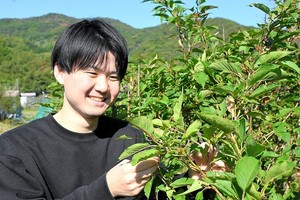By LISA VOGT/ Special to Asahi Weekly
April 9, 2024 at 08:00 JST
I smiled, looking at the Shinagawa license plates on my rental car.
Yes, I’m still in Tokyo. Sailing 25 hours on the Ogasawaramaru from Takeshiba Pier is the only way to get to Chichijima (formerly Graft island or Peel island) of the Ogasawara-shoto (Bonin islands), which are commonly put into three main island groups. The other two are Hahajima (Fisher island) and Mukojima-retto (the Parry Group). What’s with all these alternate non-Japanese names?
Mainland Japan has never been “discovered,” claimed or colonized, but these islands that are now part of Japan tell a different story. The first official records of the islands date to 1639 by the Dutch. Japanese, English and Russians followed. The first permanent settlement was a group from the Kingdom of Hawaii consisting of native Hawaiians, Britons, Americans and a Dane.
Soon, more Europeans, Americans and Pacific Islanders arrived. On the way to Japan, American naval officer Matthew Perry dropped by and claimed the islands for the United States. In 1862, Japan took control and called the islands Ogasawara. Ethnic Japanese joined the melting pot, and European and Austronesian languages resulted in a Creole English called Bonin English that’s still spoken today on the islands by old-timers.
Geologically, the Ogasawara islands are unique in that they rise spectacularly out in the middle of the ocean and have never been part of a continent. Because of this isolation, only species that could fly, float or swim found their way to the islands, adapting and creating a unique ecosystem. Thirty-six percent of the plants and an astonishing 95 percent of the land snails are endemic, and the evolutionary process is continuing.
The backstory regarding the Bonin islands is that on a Japanese map, the kanji characters for mujinto (uninhabited island) were misread and printed in 1817 as Bo-nin-sima in a French journal. This became the Bonin islands.
Unfortunately, humans brought alien species to the uninhabited Bonin islands, and many unique species of flora and fauna are on the verge of disappearing.
UNESCO defines a World Heritage Site as “an irreplaceable asset of mankind as a whole and is a treasure to be handed over to future generations.” After the islands gained heritage status, conservation activities took root; thumbs up to that.
May the distinctive culture of the Ogasawara islands continue to evolve, and, as realistically as possible, its wildlife return to its uninhabited non-alien state. There’s something extraordinary about these islands. I’ll surely return.
***
This article by Lisa Vogt, a Washington-born and Tokyo-based photographer, originally appeared in the Feb. 4 issue of Asahi Weekly. It is part of the series "Lisa’s UNESCO World Heritage Sites in Japan," which depicts various parts of the country through the perspective of the author, a professor at Aoyama Gakuin University.




















A peek through the music industry’s curtain at the producers who harnessed social media to help their idols go global.
A series based on diplomatic documents declassified by Japan’s Foreign Ministry
Here is a collection of first-hand accounts by “hibakusha” atomic bomb survivors.
Cooking experts, chefs and others involved in the field of food introduce their special recipes intertwined with their paths in life.
A series about Japanese-Americans and their memories of World War II